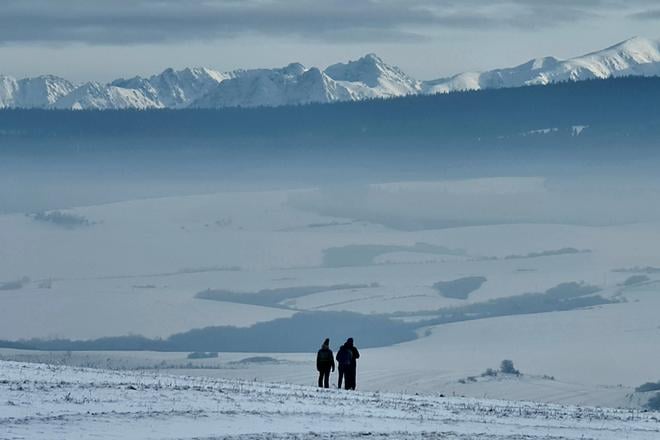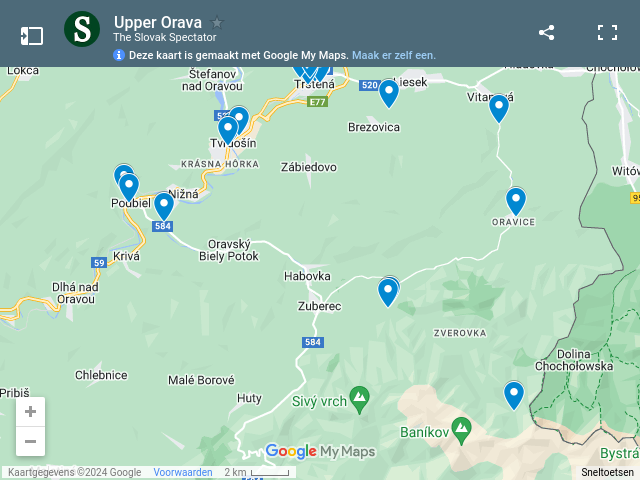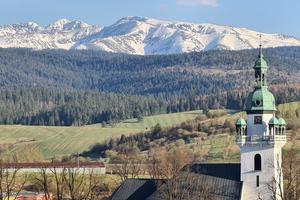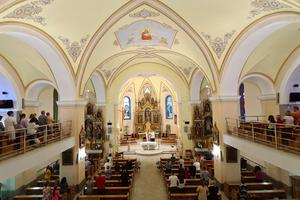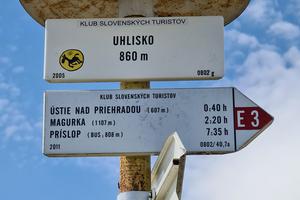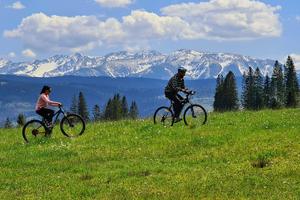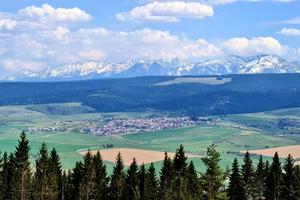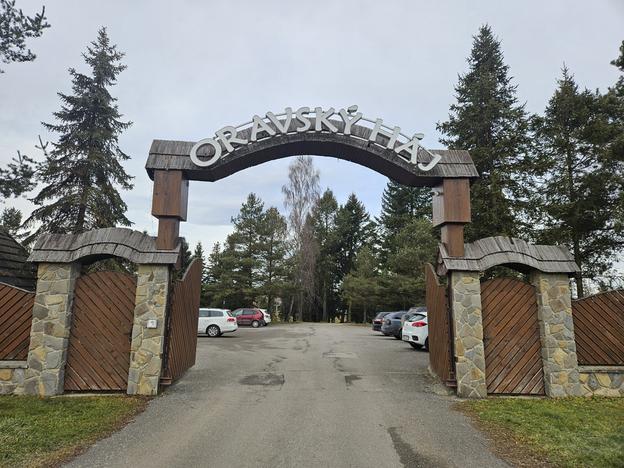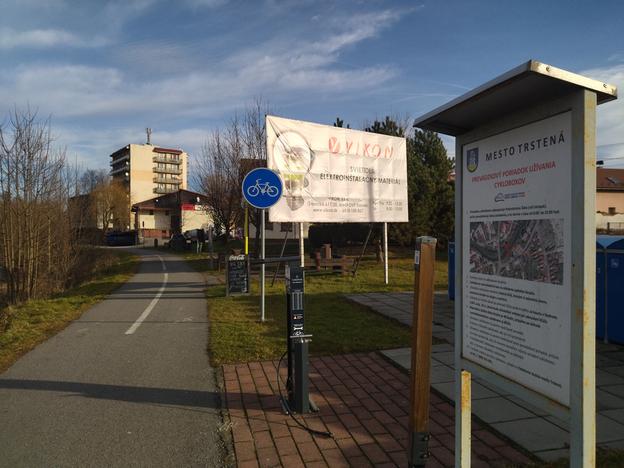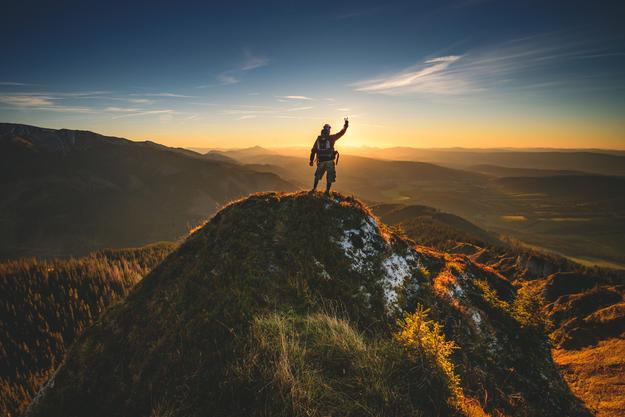You can read this exclusive content thanks to the FALATH & PARTNERS law firm, which assists American people with Slovak roots in obtaining Slovak citizenship and reconnecting them with the land of their ancestors.
Trstená, a key town in the Upper Orava (Horná Orava) region, offers a unique blend of socialist architecture and historical significance, particularly in its religious monuments. It is located in Northern Slovakia and this part of Slovakia you can discover with our Žilina region travel guide.

The standout is the Catholic St. Martin’s Church, distinguished by its four turrets beneath the main tower. Visitors can also savour a coffee within its welcoming space. Beside the church lies a Franciscan monastery from the late 18th century, while a reconstructed crypt beneath the church adds to its historic allure.
The town recently restored the Vilček Mansion, transforming it into a city museum. The museum’s highlight is the Orava clay nativity scene, crafted from clay—a material deeply rooted in Trstená’s heritage, with a ceramic workshop still in operation today.
Mayor Magda Zmarzláková describes the nativity scene as “a unique display of European significance, featuring up to 500 clay figures that fill the entire room.”
Visitors are also encouraged to explore the municipal office, housed in a beautifully restored historic building with a fascinating backstory.
Originally constructed in the nearby village of Liesek by a Belgian mining company in the early 20th century, the building was part of an ambitious project to extract coal from the Orava region. However, when the coal reserves proved less plentiful than anticipated, the company went bankrupt. The entire structure was then dismantled, transported to Trstená, and reassembled, where it now serves as the district office and a pub.
Tourism with a spiritual touch
For those who prefer to venture beyond the city centre and immerse themselves in nature, there’s now an opportunity to blend tourism with spiritual enrichment.
A Marian pilgrimage site has recently been established on Bubeník Hill, just outside Trstená. Pilgrims gather here every mid-July to celebrate the Feast of the Scapular of the Virgin Mary. The site also features an educational trail adorned with a mosaic Stations of the Cross, adding an artistic dimension to the experience.
“It’s an ideal spot for a family day out,” says Zmarzláková. Plans are underway to construct an observation tower at the hill’s summit, promising panoramic views of Roháče, the Orava water reservoir, and Babia Hora.
Trstená itself offers a tranquil retreat, with city parks featuring green oases where visitors can relax on benches or browse books from an outdoor library. The town still operates a cinema equipped with 3D projection—a rarity in smaller towns.
“In our town, you’ll find everything you need, all while enjoying the peace and quiet,” says the mayor, encapsulating the charm of this small yet vibrant town.
A helping hand in the heart of Europe: a travel guide to Slovakia.
Big plans
In the heart of Trstená, the recently renovated Roháč Hotel stands as a beacon of transformation. Meanwhile, Hotel Skalka is undergoing significant repairs, and the town’s historic Jewish synagogue is set to be restored. Once completed, the synagogue will house a cultural and information centre.
“We want tourists to spend more time here,” the mayor says, noting that this will benefit local hotels, restaurants, and the town itself.
A short distance away, the village of Ústie nad Priehradou, part of Trstená, nestles along the shores of the Orava Dam—the largest reservoir in Slovakia. Visitors can explore a fascinating 3D model of the dam, which depicts the sections of the village that now lie submerged beneath its waters.
For those venturing into the wider region of Upper Orava, the nearby district town of Tvrdošín offers a cultural gem: a 15th-century Gothic wooden church. Recognised as a UNESCO World Heritage Site, this architectural treasure provides a glimpse into Slovakia’s mediaeval past and is not to be missed.
Skiing and swimming in hot water
For those weary of both sacred and secular landmarks in the cities of Upper Orava, the recreation centre of Oravice offers a welcome retreat, best known for its soothing geothermal waters. Beyond swimming, the area serves as an ideal starting point for hikes into the rugged Western Tatras.
Oravice also caters to cycling enthusiasts, with trails winding through the serene Tichá and Bobrovecká valleys. In winter, the area transforms into a hub for snow sports. En route to Oravice, skiers can pause in the village of Vitanová, which boasts its own ski slopes.
Find out more about the region of folklore, national parks and modern attractions in our Žilina Region Travel Guide.
A little farther on, the charming mountain village of Zuberec beckons. Here, visitors can explore an open-air museum that brings Orava’s traditional village life to vivid life. The village also serves as a gateway to the majestic Roháč mountains, home to pristine alpine lakes like Ťatliakovo Lake. Nearby, the Brestovská Cave awaits exploration, sheltering rare cave fauna.
For a more leisurely escape, the Orava Grove holiday resort near Breznica offers indoor and outdoor pools, alongside a farm where guests can take riding lessons or simply enjoy the company of horses.
Paradise for cyclists
You can explore Upper Orava not only by car or on foot but also by bicycle. A largely segregated asphalt cycle path offers a safe and enjoyable biking experience, while mountain roads cater to those seeking a more adventurous ride.
The cycle route along the Orava River closely follows the railway line, which terminates in Trstená. Once extending to Nový Targ, the former railway tracks have been repurposed into a new cycle path, a project initiated by the local communities.
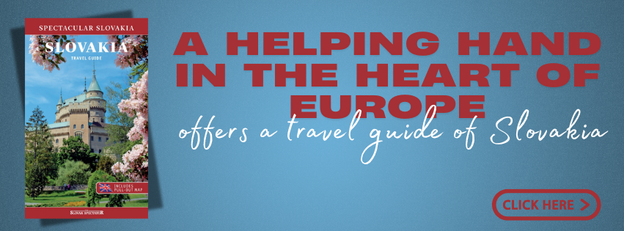
The path offers access to a variety of attractions, including the Orava Dam, Oravice, and the Polish village of Chocholów, known for its thermal aquapark and charming wooden houses. Riders will also pass through wetlands teeming with unique flora, providing a serene escape into nature.
For those interested in more than cycling, the route is dotted with numerous cultural landmarks, offering a glimpse into the region’s rich history and heritage.
Iron past of Orava
Few people are aware that iron was once mined in Upper Orava. In the 19th century, this activity gave rise to an ironworks later known as Františkova Huta.
Today, the site is recognised as one of Orava’s most significant technical monuments. Its main structure stands in the village of Podbiel, making it a compelling destination for enthusiasts of industrial architecture. Iron ore was also extracted in Juráňová Dolina, Zuberec, and Habovka.
What else is worth visiting in Upper Orava:
Discover Northern Slovakia with our Žilina region travel guide.
Orava Clay Nativity Scene, a unique piece with over 500 ceramic figurines in Trstená.
Orava Village Museum in Zuberec
The Church of All Saints, a wooden Gothic church in Tvrdošín
Chapel and bell tower, Krásna Hôrka, Tvrdošín
Mária Medvecká Gallery, Tvrdošín
Bobrova Raľa and the small ethnographic museum, Podbiel
Františkova Huta, the ruins of a 19th-century ironworks near the village of Podbiel
Ski resort Roháče - Spálená
Spectacular Slovakia travel guide
A helping hand in the heart of Europe thanks to our Slovakia travel guide with more than 1,000 photos and hundred of tourist spots.
Our detailed travel guide to the Tatras introduces you to the whole region around the Tatra mountains, including attractions on the Polish side.
Lost in Bratislava? Impossible with our City Guide!
See some selected travel articles, podcasts, and traveller info as well as other guides dedicated to Nitra, Trenčín Region, Trnava Region and Žilina Region.


